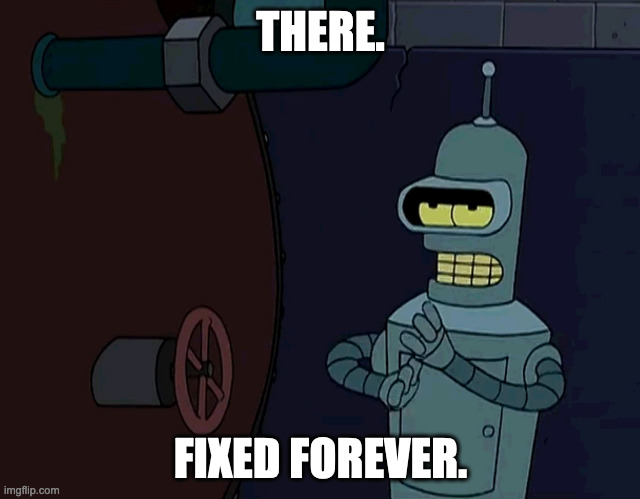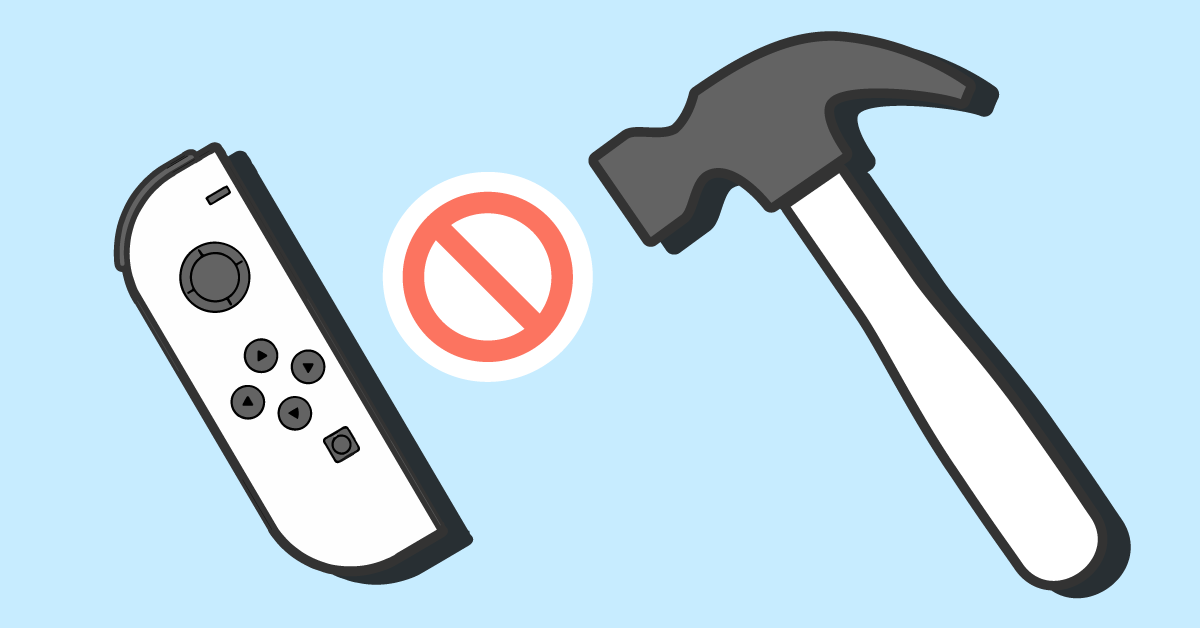
Fix Nintendo Switch Joy-Con Drift in 108 Steps or Less!
By Brian • 24 August 2023
Bandit. 75 yards. She’s the night watch, standing guard on the fringe of camp. I take aim. I tap my left analog stick ever so gently. Just a slight step to the left to clear some brush. I release.
I...miss?
The cause is clear: I'm still moving. My thumb is completely off the left analog stick, yet I’m drifting slightly to the left. My arrow, too, drifts left, alerting the night watch, the entire camp, heck, probably even a bear somewhere off in the woods. Disaster.
Now, I’m on the run, a calamity of axe-wielding bandits behind me. Me, a bad enough dude, turning tail from this bunch of lowlifes? I won't be able to show my face at headquarters for weeks!
What happened? Could this be it? The infamous Joy-Con drift plaguing Nintendo Switch owners everywhere from Zebes to Fourside? Whatever it was, I didn’t like it.
Maybe I should try another game? Just to be sure?
I return to the menu, parse through my recently played games, and load Donkey Kong. I’m near the top of the first level, and Mario runs off the left side of a girder of his own accord, like an idiot. Can he not see the certain death awaiting him?! Again, I am not to blame. I would never do such a thing to this venerable plumber. My thumb was off the stick long before Mario’s untimely demise.
This is not a drill. Joy-Con drift is real, and I am personally affected. So, what now?
I lose myself in my bad enough ponderings. I have to do something. I simply can’t continue my adventures with faulty equipment! Too much at stake—kingdoms, galaxies, banana hoards. Without a left Joy-Con operating at peak efficiency, I’m not me. I’m not bad enough. And Video Game Land deserves a bad enough dude.
I consult the internet, a wellspring of knowledge, both dependable and not-so-much, on the home repair of video game consoles and peripherals. Perhaps here, nestled among the ads for “the most realistic PC game of 2023” and shirts with cringe-worthy empowering comments for middle-aged women on them (for which I am part of the demographic, apparently?), I will find the answers I seek.
The first, easiest solution, it would appear, is to simply recalibrate my Joy-Cons. Perfect! I'll be back to saving the universe in no time!
The recalibration is a success, but during a quick test, Mario still decides running off the side of the level would be more fulfilling than combat with a giant ape.
The easiest solution, it would appear, is insufficient for my universe-saving needs. Time to regroup! Again, I consult the internet. And while I am briefly tempted by a scintillating ad for a wine o’clock t-shirt (for which I am part of the demographic!), I escape commercialism just in time to investigate my next potential fix: cleaning the Joy-Con! This should be no problem. A seasoned retro gamer like me has a whole drawer full of security screwdrivers and bits to disassemble even the most locked-down classic consoles and game cartridges. I’ve cleaned dust and gunk and spider webs out of any number of electronics. I even found a dead wasp in an NES one time. I’m ready for this task. Let’s get to work!
Except that...well, upon further inspection, it would appear I do not have the tools necessary to disassemble a Joy-Con. Again, I am stymied, this time by tiny three-prong security screws. Is this bad enough dude doomed to a future of frustration and mediocre, left-drifting adventures? A future of not really being a bad enough dude anymore?
No. I refuse. I’m back on the internet, on the hunt for these Switch-specific security screwdrivers. I find some, but along the way, I find it’s just as cost-effective to simply buy a complete Joy-Con analog stick replacement kit, tools and parts included. Handing over my hard-earned gold, I pay a faceless corporate conglomerate the necessary funds to procure the kit from another faceless corporate conglomerate and ship it to HQ. Ugh. The mires I am willing to dredge for the sake of enjoying my hobbies to their fullest.
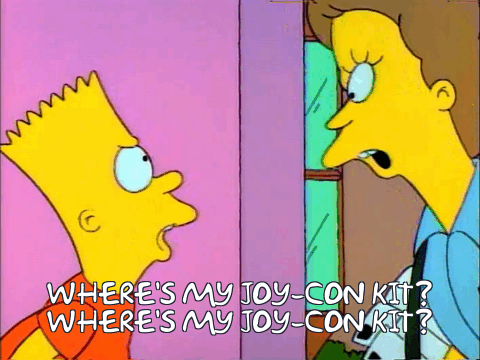
The kit arrives. Now is the time. I muster every bit of knowledge, patience, and manual dexterity I’ve gained from previous controller repairs and PC builds. I briefly flash back to the trauma of replacing the battery in my wife’s Macbook—four hours of delicate work, a 108-step process, and an incident where I very nearly could have burned our house down if my attempt to pry the old battery out with a butter knife had been executed with slightly less finesse and/or slightly more stupidity. A drop of flop sweat hits the counter. I’m ready, but I’m not ready.
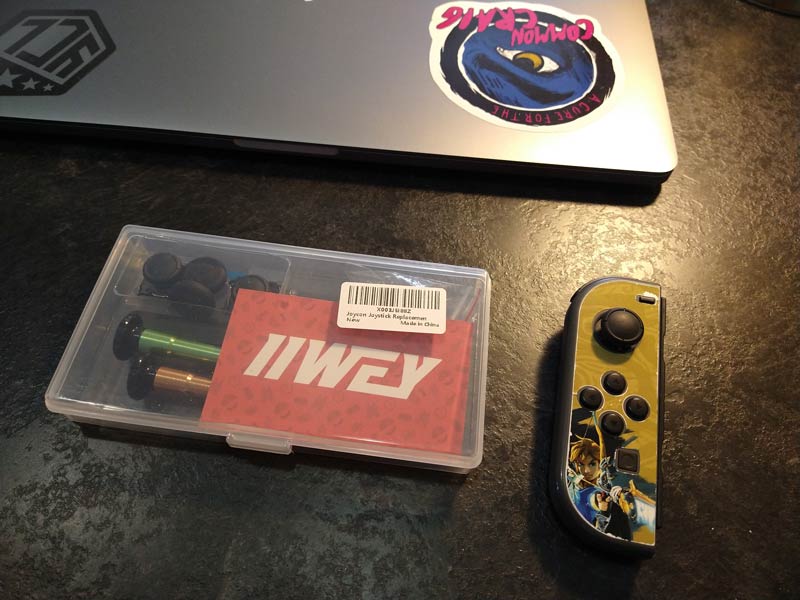
My first task, aside from removing the screws and back casing of the Joy-Con, is—flop sweat increasing—remove the battery. Which is slightly taped down to increase complication, of course. The guide I found on the internet that walks me through the replacement has this to say:

Fortunately, the Joy-Con battery proves far more cooperative than the Macbook battery, and I remove it without a house fire, or even too much resistance.
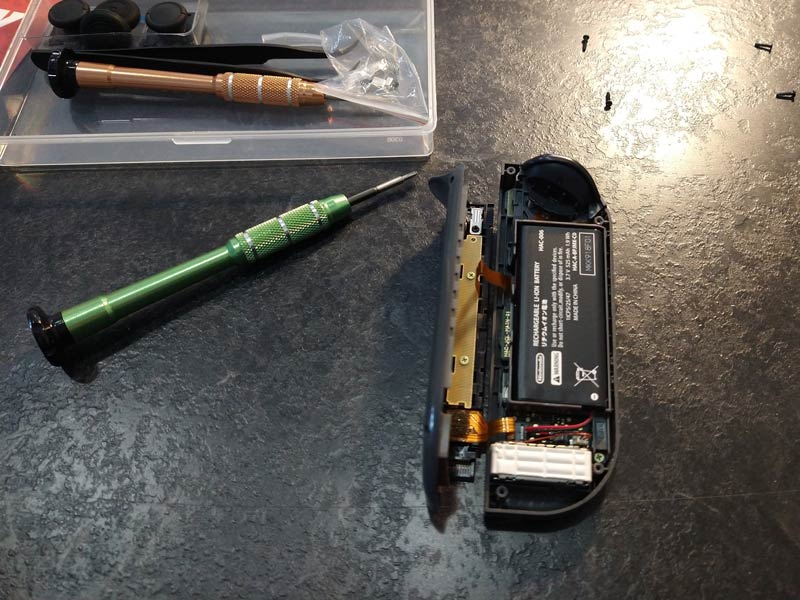
Next, I remove a piece of plastic inner framing, and I can finally see the metal baseplate of the finicky analog stick. But wait! Before the stick comes out, a tangle of paper-thin cables must be disconnected, first by unlocking the connectors by flipping up nigh-microscopic latches, then delicately pulling the cables out of their slots, preferably without causing any damage along the way and nullifying this entire operation.
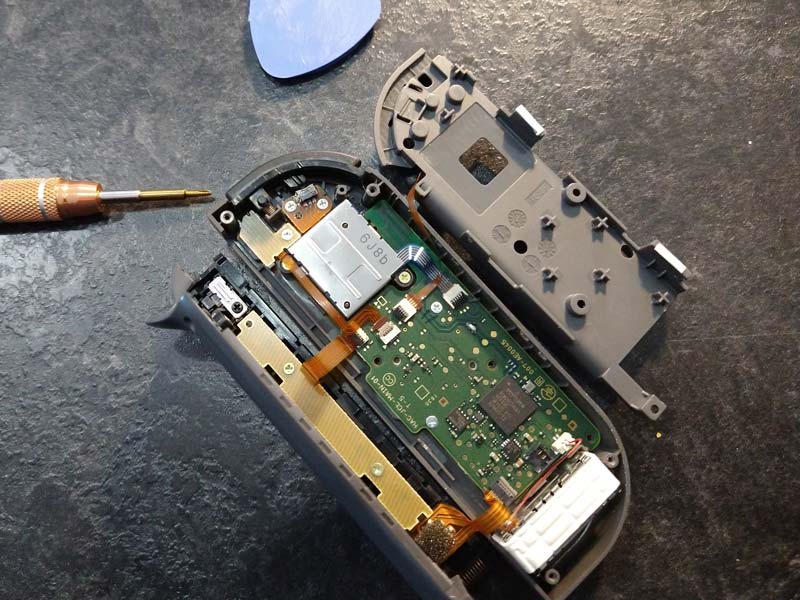
Sweat collects on my brow. I swallow hard. Losing confidence in my ability to not screw this up, I consider aborting and putting the Joy-Con back together as it is. A drifting Joy-Con is only a little bit better than a nonfunctional Joy-Con, but it’s still better, right? I wonder how much Geordi La Forge worried about permanently damaging Lieutenant Commander Data any time he had to poke around in his positronic brain. If it was anything like this Joy-Con, I feel like he should have been pretty worried. There is almost no substance to these cables—their disintegration between my fingertips seems imminent as I try in vain to keep them out of the way of my work.
Finally, I remove the analog stick. I also bump the spring assembly holding the L button in place, causing an additional spray of tiny pieces across the countertop. Oops. At least I had the sense to take pictures along the way, so I should be able to put it back together? Should.
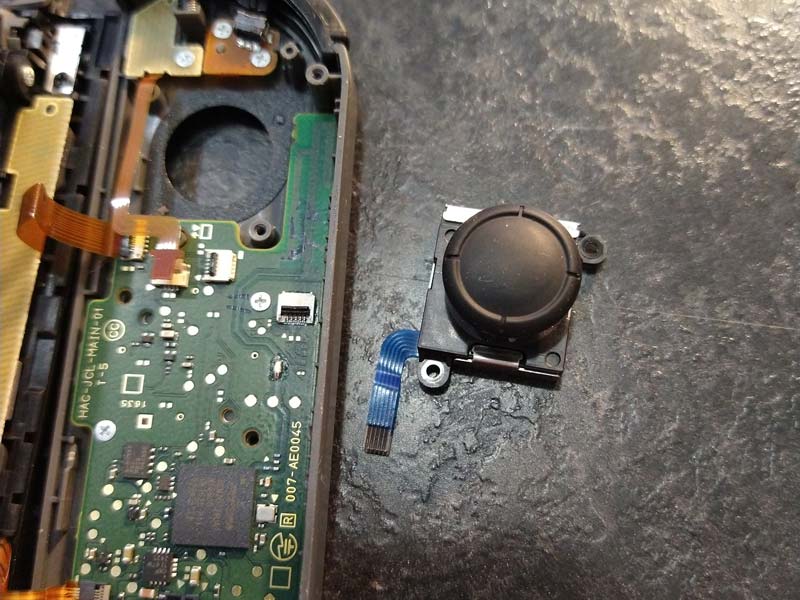
I slot in the new analog stick and work my way backwards through the removal steps to reassemble the Joy-Con. To my surprise and delight, everything fits the way it should, and I don’t have any leftover pieces by the end of the process, which is something of a rarity for me when I do this type of work. This is why the Enterprise would never let me work on Data, but at least I wouldn’t have to answer his awkward questions about why I didn’t replace the third screw of his cranial assembly and why there’s a weird bulge in the side of his head now, or whatever. Geordi’s an engineer; I’m a dude with a drawer full of tools.
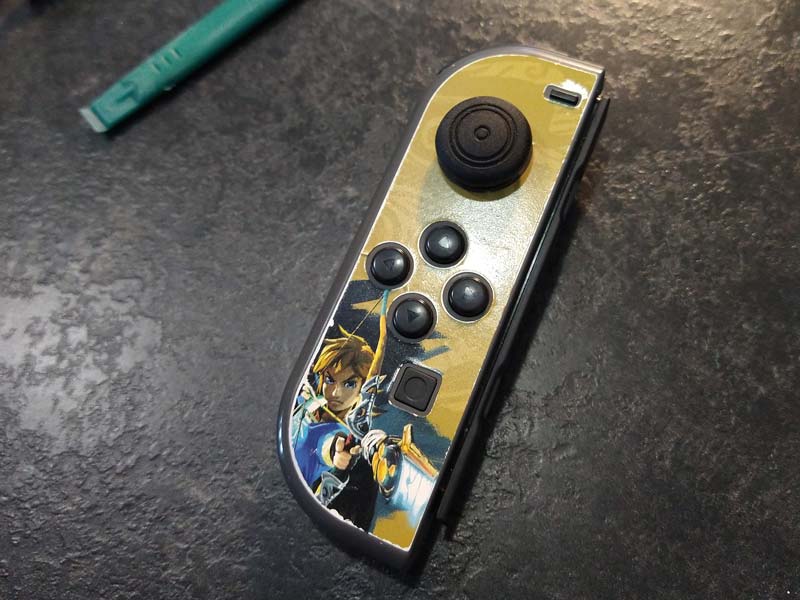
The kit also includes a second analog stick, by the way. In case I need to do this again. Great. Another possibility to worry about needlessly, forever.
My repair is complete, but does it work?! Did I remember to reattach all those waifish cables? Did I accidentally smear too much rye and Slim Jim grease on the components?
Only one way to find out: I load Skyrim and put a wandering skeleton out of its misery from an impressive distance. All is well.
I’m back, and Video Game Land is safe. For now. See you next mission, and thanks for reading!
[One Last Credit: the title graphic for this post is an homage to this silly tweet from Eric Bailey, which may or may not be around much longer, depending on the future of the Twitter platform.]
